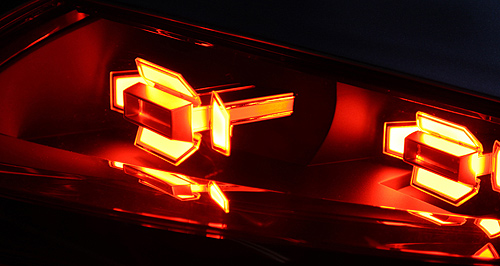News - AudiAudi goes into the future at tech showDriverless parking, autopilot, OLED and laser lighting in Audi’s CES tech bonanza10 Jan 2013 AUDI used the Consumer Electronics Show (CES) in Las Vegas to demonstrate technologies that would not look out of place in science-fiction but could make production before the end of this decade. The developments include an automatic valet parking feature that can operate without the driver on-board, and animated organic LED (OLED) and laser lighting that addresses the shortcomings of existing systems. Audi also demonstrated an autopilot mode that takes the strain out of driving in traffic or can be activated for limited periods to give the driver a break. New three-dimensional instrument graphics and an advanced sound system prototype were also among the exhibits. The automatic parking system and traffic jam autopilot come under Audi’s banner of “piloted driving”, which the German company claims “will be technically feasible before the decade is out”. One of the more impressive features of piloted driving was demonstrated in a video showing the driver exiting the car, pushing the park button on a smartphone app and the car driving itself into a hotel’s underground garage, locating a vacant space and reversing into it. The driver is later able to remotely summon their car from its parking space, in similar fashion – if less dramatic – to scenes from 1980s television show Knight Rider and the James Bond movie Tomorrow Never Dies.In this example, the parking facility takes over control of the vehicle, communicating with it via a wireless internet connection to guide it to the closest available parking space, while the vehicle’s sensors are used to prevent collisions. Audi says it is in the process of equipping a parking facility in its home city of Ingolstadt with the technology to make automatic valet parking a reality. In addition to saving the driver time and effort, car parks equipped with this technology could be designed with less space between vehicles as space for opening doors will not be required. As an extension of existing systems that can detect a suitable parking space and take control of the steering to help the driver park, Audi’s vision of the future also enables the driver to exit the car before parking in tight spots or narrow garages. Various forms of autonomous driving have been demonstrated by several car manufacturers, and Audi’s integrates numerous existing driver assistance and safety technologies to make it possible for a car to drive itself at speeds between standstill and 60km/h. Sensors enable adaptive cruise control, lane-keeping assistance, blind-spot monitoring and autonomous emergency braking to combine with the electric power steering system to enable the car to safely follow traffic and lane-markings without driver input. Once the congestion has passed and traffic starts travelling faster than 60km/h, the driver is prompted to resume control of the car. Audi prides itself on being at the forefront of lighting technology, having debuted LED daytime running lights and full-LED headlights on its production cars. To keep itself ahead of the curve, it is now working on electronically-controlled OLED technology, which is even more energy efficient than standard LEDs, has better light distribution and can be applied as a thin layer on to any flat surface. Audi demonstrated its take on automotive OLEDs – ideally suited for interior lighting or a replacement for the traditional tail-light cluster – via a continuous lighting panel across the tail of a car. The panel displays a continuously moving “swarm” of light taking the shape of Audi’s current tail-light design, with the flow of light – likened to the movement of schools of fish – representing the car’s movements. In theory, this helps drivers behind the OLED-equipped car to judge the intentions of its driver as the speed of the swarm is relative to that of the vehicle and its direction of flow represents either direction of turn or whether the car is decelerating or braking. A second lighting innovation is a laser tail-light that sends a fan-shaped beam downwards, casting a red line on to the road surface to indicate a safe following distance to the car behind in clear conditions. In fog, rain or mist, the fan-shaped beam is visible as it strikes the airborne water droplets, creating the shape of a warning triangle. Audi is also working on true three-dimensional instrument graphics that do not require special glasses as the image is broken up by lenses for the left and right eye, with the driver’s eye movements and location constantly tracked to maintain a perfect image. The company showcased its next-generation sound systems with the Q7 Sound Concept, featuring what it describes as 3D music reproduction – a technology it plans to debut in a new model as early as next year. Designed to provide a more natural surround sound experience than existing systems, the Audi concept reflects the sound waves off the vehicle’s floor and ceiling, helping to enable listeners to detect which height – as well as direction – sounds are coming from.  Read more9th of January 2013  Detroit show: Audi pumps up blown V6 for SQ5Petrol Audi SQ5 gets more grunt out of supercharged 3.0-litre V6 than S5 and S47th of January 2013  Audi reportedly cuts back EV plansTwo future Audi EVs – the R8 e-tron and A2 – axed, according to European reports |
Click to shareAudi articlesResearch Audi Motor industry news |
































Facebook Twitter Instagram